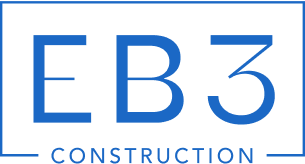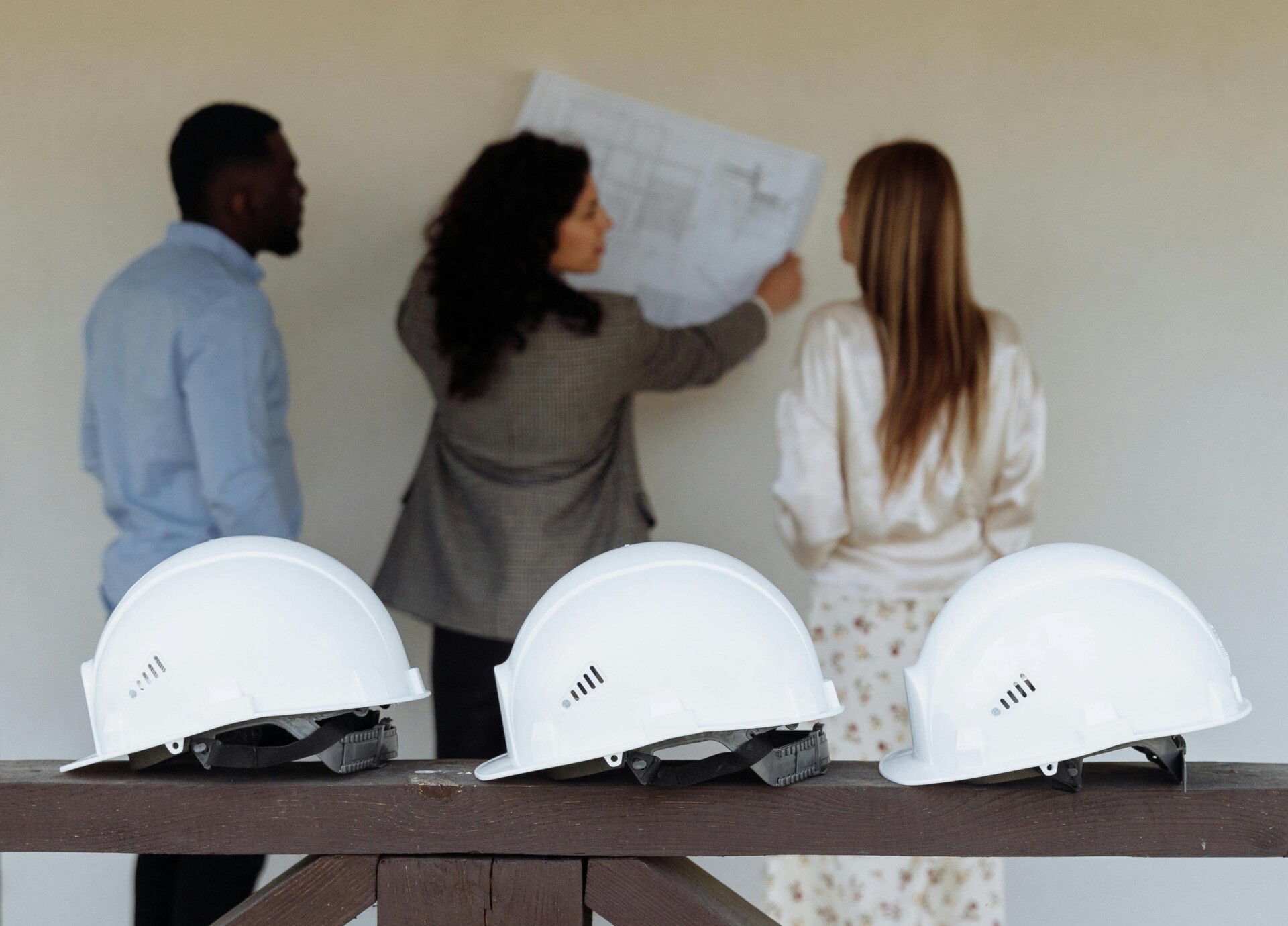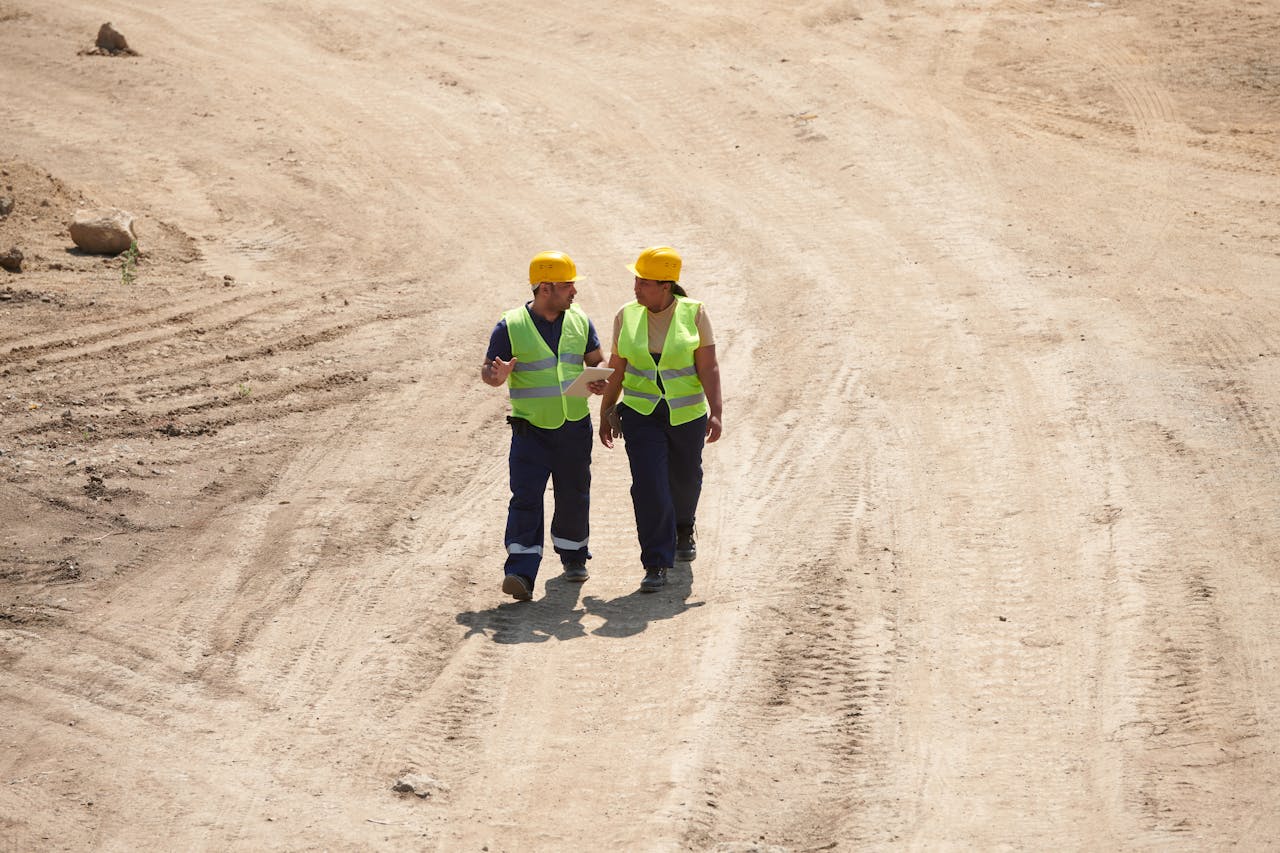A collision center construction contractor specializes in building comprehensive facilities for auto body, paint, glass, and repair operations. These contractors handle everything from collision repair centers to full-service automotive shops that serve both independent businesses and insurance-preferred providers.
We coordinate design-build delivery, permitting support, and materials logistics for post-frame steel and pre-engineered metal buildings that meet the unique demands of automotive repair work. The scope covers structural systems for clear-span vehicle bays, customer reception areas, and specialized zones for paint, frame repair, and parts storage while addressing critical infrastructure like ventilation, fire suppression, and waste management systems.
Which Building Systems And Materials Work Best For Collision Centers?
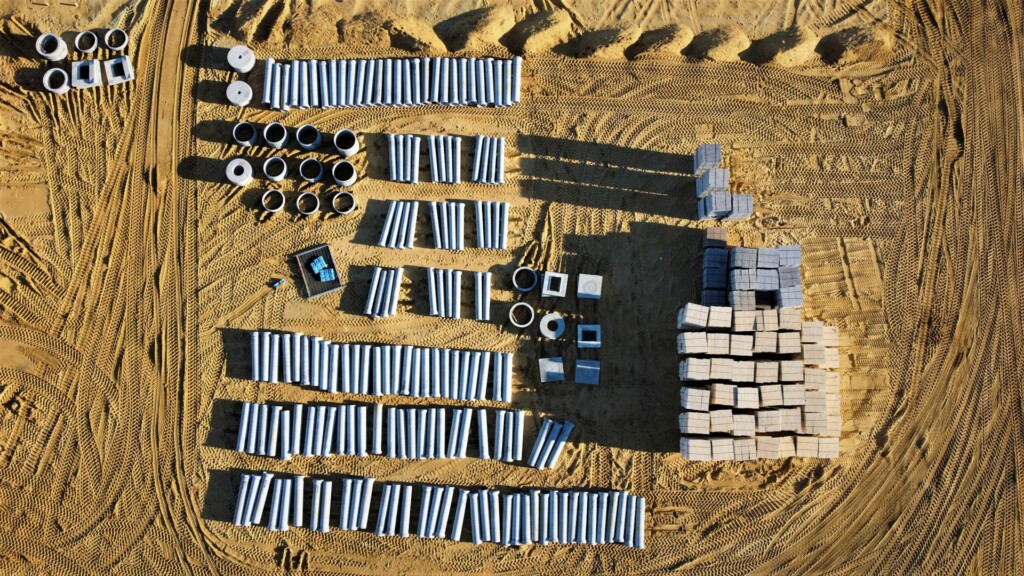
Steel-forward building approaches dominate collision center construction for good reason. Post-frame structures deliver speed and adaptability, while pre-engineered metal buildings (PEMB) provide predictable costs and assembly timelines. We coordinate both approaches depending on project scope and site conditions.
Post-frame construction combines wood structural elements with steel exterior systems. This hybrid approach works well for smaller collision centers, typically those under 10,000 square feet. The wood frame handles structural loads while steel cladding provides durability and low maintenance requirements.
Pre-engineered metal buildings excel for larger facilities requiring faster construction schedules. Steel construction has the upper hand over tilt-up concrete in terms of customizability and versatility, particularly for collision centers that need flexible interior layouts. PEMB systems arrive fabricated and ready for assembly, reducing on-site construction time by approximately 33% compared to conventional methods.
Clear-Span Solutions For Maximum Flexibility
Clear-span trusses eliminate interior columns, creating unobstructed work areas essential for vehicle lifts and equipment positioning. These systems can span 50 to 200 feet without intermediate support, though collision centers typically require spans between 60 and 100 feet for optimal bay configurations.
Hybrid steel and wood truss systems offer another approach. These combine steel’s spanning capability with wood’s cost efficiency, particularly effective for projects where budget constraints require creative engineering solutions. We evaluate each project’s load requirements and span needs to determine the most practical truss configuration.
The structural depth follows standard engineering principles: approximately two inches of truss depth per foot of span. A 60-foot clear span requires trusses with minimum 24-inch depth, though we often specify deeper members to accommodate mechanical systems and reduce deflection.
Steel Panel Systems And Exterior Materials
Commercial-grade 26-gauge steel panels form the backbone of durable collision center exteriors. These panels feature strong rib profiles that resist wind loads and impact damage while maintaining structural integrity over decades of service. The gauge thickness provides excellent strength-to-weight ratios without excessive material costs.
Acoustical steel panels address noise control requirements, particularly important for facilities near residential areas or those operating extended hours. These specialized panels incorporate sound-dampening properties directly into the wall system, reducing the need for additional acoustic treatments.
Steel panel colors and finishes allow customization to meet local architectural standards or branding requirements. Modern coating systems provide fade resistance and corrosion protection, essential for facilities exposed to automotive chemicals and frequent washing operations.
Insulation And Energy Performance
High-performance insulation systems reduce operational costs while maintaining comfortable working conditions. We specify continuous insulation to minimize thermal bridging through the steel structure. Faced fiberglass batts work well in post-frame applications, while rigid foam boards suit PEMB systems.
Vapor barriers require careful attention in collision center applications due to high humidity from washing operations and temperature variations from paint booths. We coordinate barrier placement to prevent condensation within wall and roof assemblies.
Energy-efficient features extend beyond insulation to include reflective roofing systems and strategic window placement. Natural lighting reduces electrical loads while overhead doors with insulated panels maintain thermal performance during frequent opening cycles.
Foundation Systems And Site Preparation
Foundation design varies between post-frame and PEMB approaches. Post-frame buildings use embedded columns or concrete piers, reducing excavation requirements and material costs. PEMB structures require continuous footings or pad foundations to distribute concentrated column loads.
Steel structures provide high strength-to-weight ratios, often allowing smaller foundations compared to concrete alternatives. This advantage becomes significant on sites with challenging soil conditions or where excavation costs are high.
Site preparation includes proper drainage to protect the foundation system and prevent water intrusion. We coordinate grading to direct surface water away from the building while maintaining accessibility for vehicle traffic and material deliveries.
How Should Layout And Customer Experience Be Planned?
Effective layout planning starts with dividing your collision center into distinct operational zones. Create dedicated service bays for different repair types, position storage areas for maximum efficiency, and design customer spaces that project professionalism while maintaining clear workflow patterns.
Service Bay Organization For Different Repair Types
Organize service bays according to repair specialization. Position frame and body repair bays with adequate overhead clearance and floor reinforcement for heavy pulling equipment. Place paintless dent repair (PDR) stations near natural light sources or install high-quality LED lighting to help technicians identify surface irregularities accurately.
Position glass replacement areas away from heavy dust-generating activities like bodywork grinding. The 4-wheel alignment bay requires a level concrete pad and isolation from vibration-causing equipment. We typically locate this specialized service near the building’s front for easier customer vehicle access and demonstration purposes.
Each diagnostics area needs electrical capacity for multiple scan tools and computer equipment. Position these zones adjacent to service bays but separate from painting and chemical storage areas to protect sensitive electronics from contamination.
Strategic Parts Storage And Inventory Management
Position parts storage within easy reach of all service bays. We design main inventory areas with direct access to multiple work zones, reducing technician travel time during repairs. Place frequently used collision repair parts like fenders, bumpers, and lights in easily accessible locations closest to primary work areas.
Create separate hazardous materials storage following EPA and OSHA requirements. This includes dedicated, ventilated spaces for paints, solvents, adhesives, and other chemicals used in collision repair work. Position these areas away from ignition sources and ensure proper containment systems for spill prevention.
Install service counters and parts counters near the main workflow areas. These stations coordinate work orders, parts requests, and customer communications without disrupting ongoing repairs. Position computer terminals and communication systems at these locations for real-time job tracking and customer updates.
Customer Area Design And Wayfinding
Design the reception area as the first impression point for your facility. Position it near the main entrance with clear sightlines to both customer parking and shop operations. We recommend comfortable seating for 8-12 customers, depending on your expected daily volume and average repair timelines.
Create a customer lounge separate from the main reception desk to provide privacy for insurance discussions and estimate reviews. Include amenities like complimentary beverages, Wi-Fi access, and charging stations for mobile devices. Position this area with windows overlooking work bays to maintain transparency in your repair process.
Add restrooms accessible to customers without requiring passage through work areas. Position offices for managers, estimators, and administrative staff near customer areas but with soundproofing to handle confidential insurance and pricing discussions. Include a private consultation room for detailed damage assessments and repair explanations.
Workflow Optimization And Movement Patterns
Keep lifts, tools, and equipment positioned near their primary work areas. We design tool storage systems adjacent to each service bay, reducing the time technicians spend retrieving necessary equipment. Position air compressor lines, electrical drops, and waste disposal access points to support efficient work patterns.
Maintain wide, unobstructed pathways between all work areas. Standard practice calls for 12-foot minimum clearances in main traffic lanes to accommodate vehicle movement, equipment transport, and emergency access. Mark floor traffic patterns and designate specific routes for customer vehicles versus work equipment movement.
Position overhead doors strategically to support smooth vehicle flow from drop-off through repair completion and customer pickup. We typically recommend separate entrance and exit points to prevent traffic bottlenecks during busy periods. Consider the installation of door position indicators and traffic control systems for larger facilities handling multiple simultaneous repairs.
What Safety, Ventilation, And Waste Controls Are Essential?
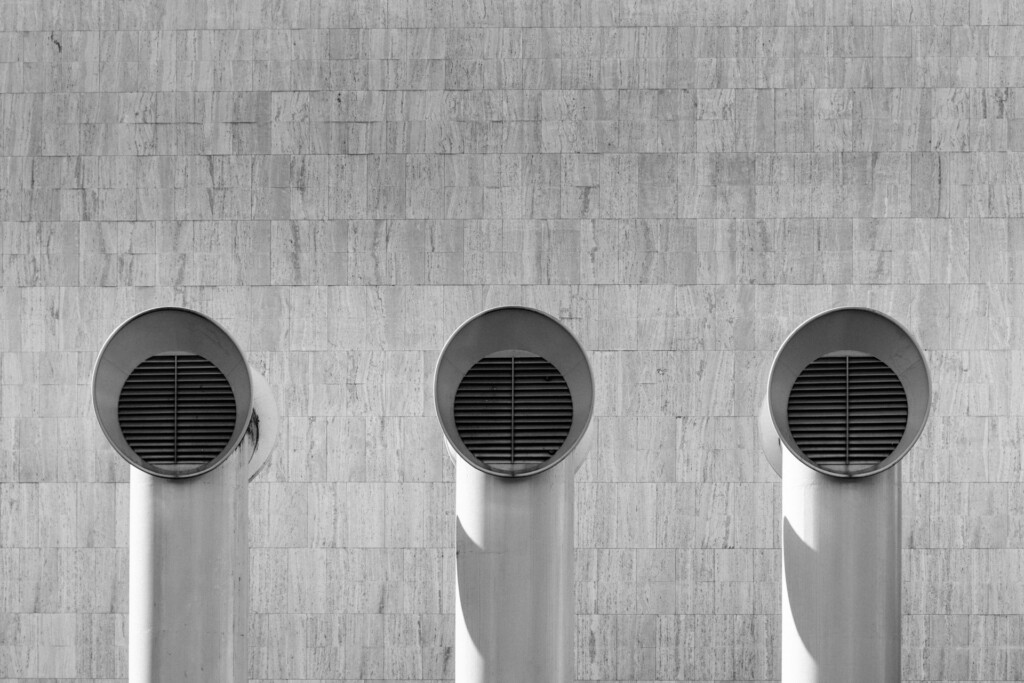
Ventilation and air filtration systems form the foundation of collision center safety. We engineer these systems to maintain proper airflow across all work areas, removing paint fumes, welding smoke, and chemical vapors before they accumulate. Effective ventilation requires exhaust velocity of at least 100 feet per minute across paint booth openings and adequate makeup air to prevent negative pressure throughout the facility.
Fire suppression systems protect against the inherent risks of flammable materials and welding operations. We install automatic sprinkler systems where practical, position appropriate fire extinguishers throughout the facility, and ensure electrical systems meet explosion-proof requirements in areas handling Category 1 and 2 flammable liquids. Each system component requires annual maintenance and clear labeling with inspection dates.
Lighting And Emergency Safety Features
Safety lighting eliminates shadows and provides adequate illumination for detailed work. We specify bright task lighting for each service bay and ensure uniform coverage across all work surfaces. Emergency lighting and marked exits guide occupants during power outages or emergencies, while clear, well-maintained floors prevent slips and falls from spills or debris.
Exit routes require unobstructed paths and proper signage visible from all areas of the facility. We design floor drainage systems to handle wash water and minor spills, using slip-resistant surfaces in high-traffic zones and areas prone to moisture.
Hazardous Materials Storage Requirements
Dedicated, ventilated storage areas separate flammable and hazardous materials from general work zones. OSHA regulations require fireproof cabinets for flammable liquids, with capacity limits of 60 gallons for Category 1-3 materials and 120 gallons for Category 4 materials. Storage rooms need specialized electrical wiring, containment systems for spills, and proximity to fire control equipment.
We position these storage areas away from ignition sources and design them with proper drainage to contain leaks. Material safety data sheets must remain accessible near each storage location, and all containers require proper labeling with contents, hazard warnings, and expiration dates.
Waste Management And Environmental Compliance
Waste management systems handle used oil, filters, solvents, and paint residues according to environmental regulations. We establish satellite accumulation areas for hazardous waste, ensuring containers remain properly labeled and grounded during transfers. These areas require disposal before reaching 55-gallon limits and must maintain separation from general waste streams.
Oil and filter disposal requires covered metal containers emptied on regular schedules. Paint waste storage follows specific protocols for different material types, with proper ventilation and containment for both liquid and solid residues. We coordinate with licensed disposal services to ensure compliance with local environmental requirements.
Personal Protective Equipment And Training Protocols
PPE protocols address the specific hazards of collision repair work. Respiratory protection programs include fit testing, medical evaluations, and training for paint booth operations, sanding, and welding activities. Eye protection requirements vary by task, from safety glasses for general shop work to full-face shields for grinding operations.
Regular safety training covers hazard communication, emergency procedures, and proper equipment use. We establish written programs for respiratory protection and maintain documentation of training completion and medical clearances. Industry expectations continue evolving around safety standards, influencing both equipment specifications and training frequency requirements.
Which Size, Zoning, Location, And Cost Factors Matter Most?
We design collision centers around practical footprints that match staffing levels and service offerings. Common shop sizes include 24×30, 30×60, 40×60 building, and 50×60 configurations. These dimensions provide enough space for essential service bays while keeping construction costs manageable.
Zoning Requirements And Site Selection
Collision centers typically require Commercial zoning (C) or Industrial zoning (I) designations to operate legally. Commercial zones allow vehicle repair activities in mixed-use areas, while industrial zones accommodate larger operations with higher traffic volumes. We verify zoning compliance during the permitting phase to avoid costly delays.
Site visibility drives customer traffic and referrals. Choose locations near major road access with clear signage opportunities and adequate parking for customer vehicles plus work-in-progress storage. Proximity to complementary businesses like parts suppliers, tire shops, or dealerships creates natural referral networks that support long-term growth.
Startup Cost Planning
Starting a 5,000 sq. ft. collision center involves significant upfront investment. Industry data shows startup costs ranging from $67,200 to $225,500, including equipment, building refurbishment, rent deposits, and business licenses. These figures reflect the capital needed for a medium-sized operation with standard diagnostic and repair capabilities.
Equipment represents the largest expense category, from vehicle lifts and diagnostic systems to paint booths and specialty tools. Building improvements include HVAC systems, electrical upgrades, compressed air lines, and waste management systems. Initial inventory covers common parts, fluids, and consumables needed to begin operations.
Construction And Permitting Coordination
We coordinate materials logistics and permitting steps to keep projects on schedule. Pre-engineered metal building systems streamline delivery and installation, reducing construction timelines compared to traditional methods. Our approach aligns building size, site constraints, and local requirements with your operational needs and budget parameters.
Permit requirements vary by jurisdiction but typically include building permits, environmental clearances, and business licensing. We manage these processes alongside construction to avoid delays and ensure compliance with local codes and regulations.
Conclusion And Next Steps
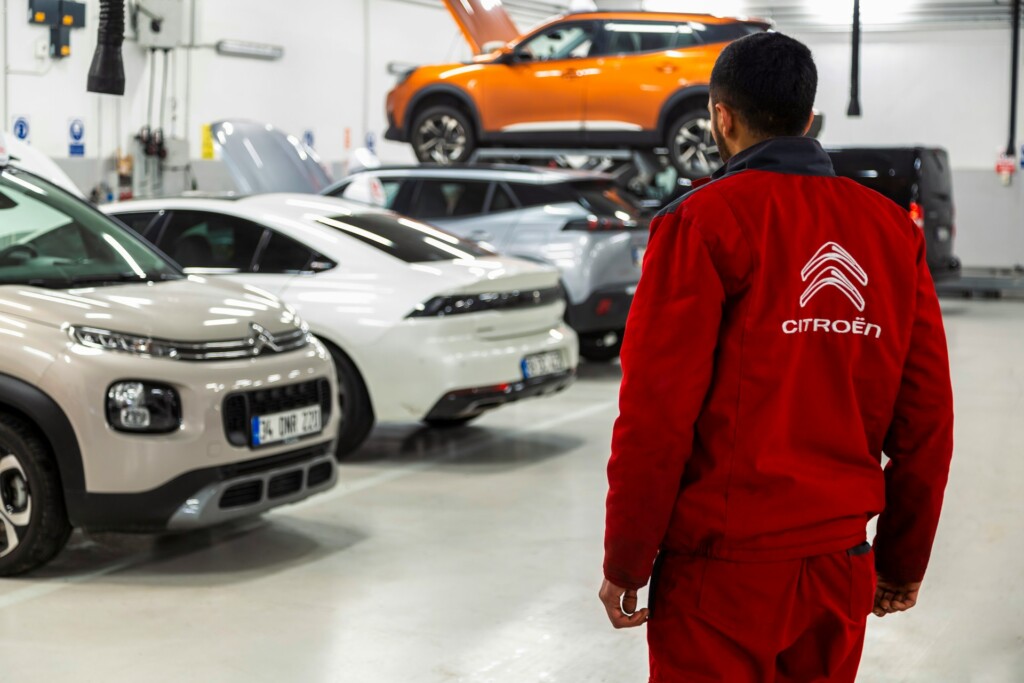
Collision center planning requires a systematic approach to create facilities that serve both operational efficiency and customer satisfaction. We define services first, then size the building according to those service offerings while choosing steel-based systems with clear-span space for maximum layout flexibility. The design process continues with mapping efficient service bays and customer areas, followed by specifying critical systems for ventilation, fire suppression, lighting, and waste controls that ensure safe operations and regulatory compliance.
Beyond the initial construction phase, successful collision centers require ongoing attention to zoning compliance, site access, and parking adequacy. We establish maintenance schedules for essential building systems including roof inspections, HVAC servicing, and plumbing maintenance to prevent costly disruptions and extend facility lifespan. Early engagement with experienced general contractors streamlines the entire process by aligning project scope with realistic schedules and budgets, coordinating complex permitting requirements, and organizing efficient materials delivery through proven design-build approaches that reduce both timeline and cost uncertainties.
Contact EB3 Construction to coordinate your collision center project from concept through completion.
